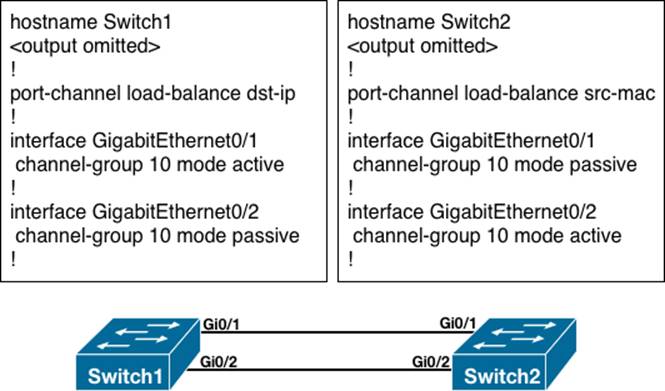What is the result of the configuration?
Refer to the exhibit.

What is the result of the configuration?
A . The EtherChannels would not form because the load-balancing method must match on the devices.
B . The EtherChannels would form and function properly even though the load-balancing and EtherChannel modes do not match.
C . The EtherChannels would form, but network loops would occur because the load-balancing methods do not match.
D . The EtherChannels would form and both devices would use the dst-ip load-balancing method because Switch1 is configured with EtherChannel mode active.
Answer: B
Explanation:
An etherchannel will form if one end is active and the other is passive. The table below sum- marizes the results for LACP channel establishment based on the configuration of each side of a link: LACP Channel Establishment S1 S2 Established? On On Yes Active/Passive Active Yes On/Active/Passive Not Configured No On Active No Passive/On Passive No Load balancing can only be configured globally. As a result, all channels (manually configured, PagP, or LACP) use the same load-balancing. This is true for the switch globally, although each switch involved in the etherchannel can have non matching parameters for load balancing. Reference: http://www.cisco.com/ c/en/us/ td/docs/switches/lan/catalyst4500/12- 2/54sg/configuration/guide/config/channel.html#wp1020804
Latest 300-115 Dumps Valid Version with 342 Q&As
Latest And Valid Q&A | Instant Download | Once Fail, Full Refund

